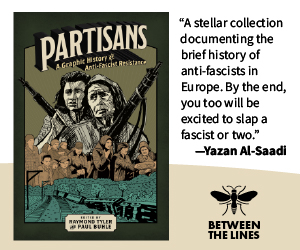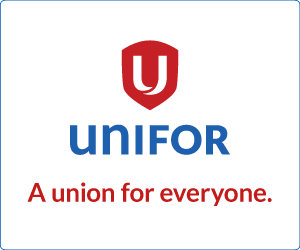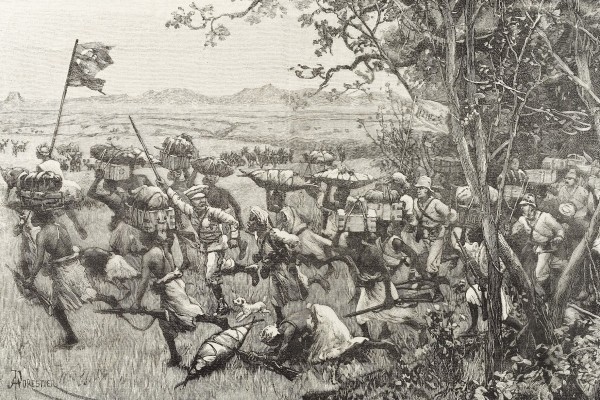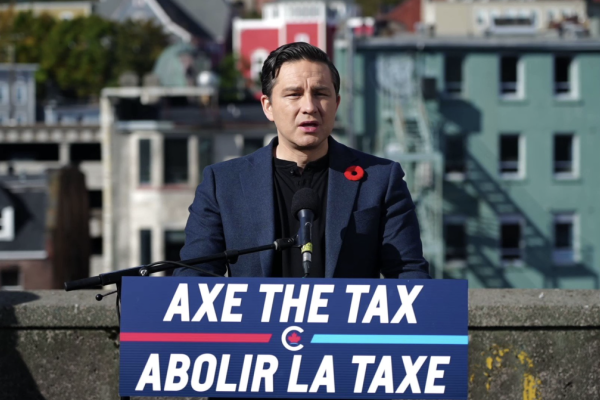What were members of Canada’s special forces doing at the Freedom Convoy occupation?
The secrecy surrounding JTF2 has long threatened democracy
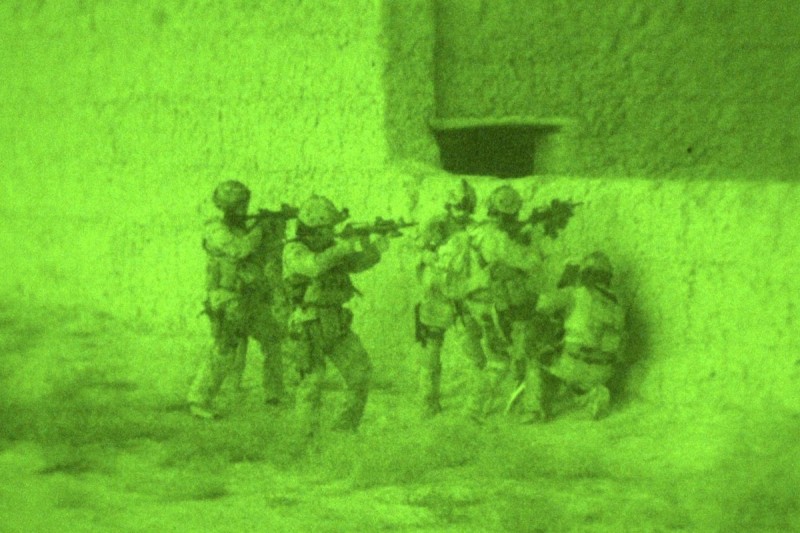
Commandos from Canada’s Joint Task Force 2 conduct a night raid in Afghanistan. Image courtesy Simon & Schuster.
Reports that members of Canada’s elite special operations force are supporting the right-wing anti-vaccine mandate protests in Ottawa are troubling. The federal government has invested heavily in training these individuals and they likely have experience in combat situations.
On Sunday, leading military reporter David Pugliese revealed in the Ottawa Citizen that two members of Canada’s Joint Task Force 2 (JTF2), are under investigation for their involvement in the Ottawa protests. The serving members of the JTF2 join a longer list of Canadian Forces personnel being investigated for participating in the occupation of the nation’s capital.
What is the JTF2 and what sort of training do its members receive? While shrouded in secrecy, here is what we know.
My latest article….Two members of JTF2, the military counter-terrorism unit under investigation for allegedly taking part in convoy protests https://t.co/WhmMdblwbs via @ottawacitizen
— David Pugliese (@davidpugliese) February 13, 2022
The most secretive and skilled unit of the Canadian Forces (CF), JTF2 engages in rescue operations, deep reconnaissance missions and international assassinations. Patterned after the British SAS (Special Air Service), it’s considered among the world’s elite special operations units.
JTF2 represents the cream of the CF’s “assaulter” crop. After three years in the armed forces soldiers can inquire if they have what it takes to apply to join JTF2. Those authorized by their unit’s chain of command to try out must complete rigorous physical fitness and swim tests, as well as a selection interview and cognitive assessments. The select few who pass this stage undergo a demanding week of tests at heights, in water, and confined spaces. The high stress tactical settings are designed to assess an applicant’s capacity to identify threats, use weapons, work in teams and make decisions under physical and mental duress. Individuals who pass this phase go through a seven-month special operations assaulter course. Only 10 to 20 percent of soldiers green-lighted to train for JTF2 make the grade.
Described as a counterterrorism unit, during its first quarter century JTF2 is not known to have fired a shot in any domestic terrorism operation. Rather, it has been employed in so-called “black ops” abroad. Canadian Institute of Strategic Studies director David Rudd said JTF2 are trained “to infiltrate into dangerous areas behind enemy lines, look for key targets and take them out. They don’t go out to arrest people. They don’t go out there to hand out food parcels. They go out to kill targets.”
JTF2 often train and deploy with the US Delta Force and Navy Seals. “In recent years,” noted a 2017 Washington Examiner story, “JTF-2 has worked very closely with US forces in operations around the globe.”
JTF2 is highly secretive. Information about its exact size and budget is classified and not commented on by the Government of Canada. Indeed, the unit’s secrecy is an important part of its utility. According to Major B.J. Brister, “deniability” is central to the appeal of special forces. A 2006 Senate Committee on National Security and Defence complained JTF2 operations were “shrouded in secrecy.”
JTF2 has likely operated in Haiti, Bosnia, Rwanda, Kosovo, Congo, Peru, Iraq, Libya, Colombia, Afghanistan and elsewhere. On February 29, 2004, “about 30” JTF2 commandos took control of the airport from which Haitian president Jean-Bertrand Aristide was bundled (“kidnapped” in his words) onto a plane by US Marines and deposited in the Central African Republic. Amidst a February 2019 general strike that nearly toppled the Ottawa-backed Haitian president, heavily-armed individuals that were thought to be JTF2 were videoed patrolling the Port-au-Prince airport. The Haiti Information Project suggested that they helped family members of President Jovenel Moïse’s corrupt, repressive and unpopular government flee the country.
JTF2 operator during the crisis in Haiti, 2004. Photo from Reddit.
After the 2003 US-led invasion of Iraq, JTF2 commandos reportedly worked alongside their British and US counterparts. While Ottawa refused to confirm it, the Pentagon and British Foreign Office told CBC JTF2 was instrumental in the March 2006 rescue of British and Canadian Christian Peace activists held hostage in Iraq.
More recently, JTF2 members have provided training, weaponry and combat support to Kurdish forces accused of ethnically cleansing areas of Iraq they captured. Despite being framed as a “training” mission, JTF2 repeatedly engaged in battle, even killing someone with a record breaking 3.5-kilometre sniper shot.
Through the 1990s JTF2 were deployed to the Balkans. In the book We Were Invincible: Testimony of an Ex-Commando, Denis Morisset recounts a joint JTF2–British SAS operation to assassinate an alleged war criminal and four of his bodyguards. According to a number of accounts, JTF2 killed Serbian snipers harassing United Nations soldiers. In Canadian Spies and Spies in Canada, historian Peter Boer writes, “on more than one occasion, when regular Canadian troops were under fire, two-man teams from JTF2 slipped into the surrounding countryside to hunt for enemy snipers.” Morisset describes participating in a number of these assassination missions. After killing several Serbian snipers Morisset realized his victims only sought to frighten—not kill—UN forces.
Morisset has made numerous explosive claims about his time with JTF2. On the eve of the book’s 2008 French language publication the CF claimed it was a threat to national security and arrested an individual who says he was part of the secretive unit during its first eight years. We Were Invincible is the only known insider’s account of a force in which each member is compelled to sign a confidentiality agreement.
According to Morisset, he was deployed to the Colombian jungle to rescue NGO and church workers “because FARC guerrillas threatened the peace in the region.” To the south, Morisset was dispatched to Peru in late 1996 after the Túpac Amaru guerrilla group took dozens of foreign diplomats (including Canadians) hostage at the Japanese embassy in Lima. JTF2 participated in the US-led rescue effort, which left all 14 guerrillas dead including many who were reportedly executed.
When Indonesian control over East Timor collapsed in the late 1990s, JTF2 were sent to that country. They paved the way for a larger US military contingent. Morisset writes that Canadian troops oversaw a small village where “the poor villagers were terrorized by our presence.”
In the fall of 1996, JTF2 escorted the UN Secretary General’s Special Envoy to the Great Lakes Region of Central Africa, Raymond Chrétien, to Kinshasa and General Maurice Baril into eastern Congo. Morisset provides a harrowing account of the JTF2 operation to bring Baril to meet Rwandan-backed rebel leader Laurent Kabila. The convoy came under fire, upon which US Apache and Blackhawk helicopters launched a counterattack on the Congolese. One Canadian died.
In their most sustained deployment to any country, JTF2 were alleged to be in Afghanistan continuously between 2001 and 2014. Alongside their US and British counterparts, 40 JTF2 members participated in the invasion of the country in late 2001 (in fact, Morisset says he was deployed briefly to the Afghanistan-Pakistan border in 1998). The Canadians fought within the US force structure.
In their first six months of fighting, JTF2 members reportedly killed 115 Taliban or Al-Qaeda fighters and captured 107 Taliban leaders. They also handed over prisoners who would be sent to the US prison at Guantanamo Bay.
By early 2002, however, the British were questioning the tactics used by US and Canadian special forces. According to Pugliese in his book, Shadow Wars: Special Forces in the New Battle Against Terrorism, “the concern among the British was that the ongoing raids [by Canadians and Americans] were giving Afghans the impression that the coalition was just another invading foreign army that had no respect for the country’s culture or religion.”
On May 24, 2002, JTF2 members were part of a raid on Band Taimore, a village 80 kilometres west of Kandahar. In their search for Taliban and Al-Qaeda leaders, the foreign forces killed several innocent civilians, including children, and took many others into custody. Unsurprisingly, those living in the village were angered by the night attack.
According to documents CBC obtained through access to information requests, a JTF2 member said he felt his commanders “encouraged” them to commit war crimes in Afghanistan. The soldier, whose name was not released, claimed a fellow JTF2 member shot an Afghan with his hands raised in the act of surrender. The allegations of wrongdoing were first made to his superior officers in 2006 yet the military ombudsman didn’t begin investigating until approached directly by the soldier two years later. The JTF2 member told the ombudsperson’s office “that although he reported what he witnessed to his chain of command, he does not believe they are investigating, and are being ‘very nice to him.’”
After a three-and-a-half-year investigation, the CF’s National Investigation Service cleared the commanders, but they failed to release details of the allegations, including who was involved or when and where it happened. The public was supposed to simply trust the National Investigation Service.
The secrecy surrounding JTF2 has long threatened democracy. The news that JTF2 members are participating in protests in which some have called for the overthrow of the Canadian government is deeply troubling. Our elected representatives must ensure the investigation into this matter be comprehensive and that the results are quickly released to the public.
Yves Engler has been dubbed “one of the most important voices on the Canadian Left today” (Briarpatch), “in the mould of I.F. Stone” (Globe and Mail), and “part of that rare but growing group of social critics unafraid to confront Canada’s self-satisfied myths” (Quill & Quire). He has published nine books.


